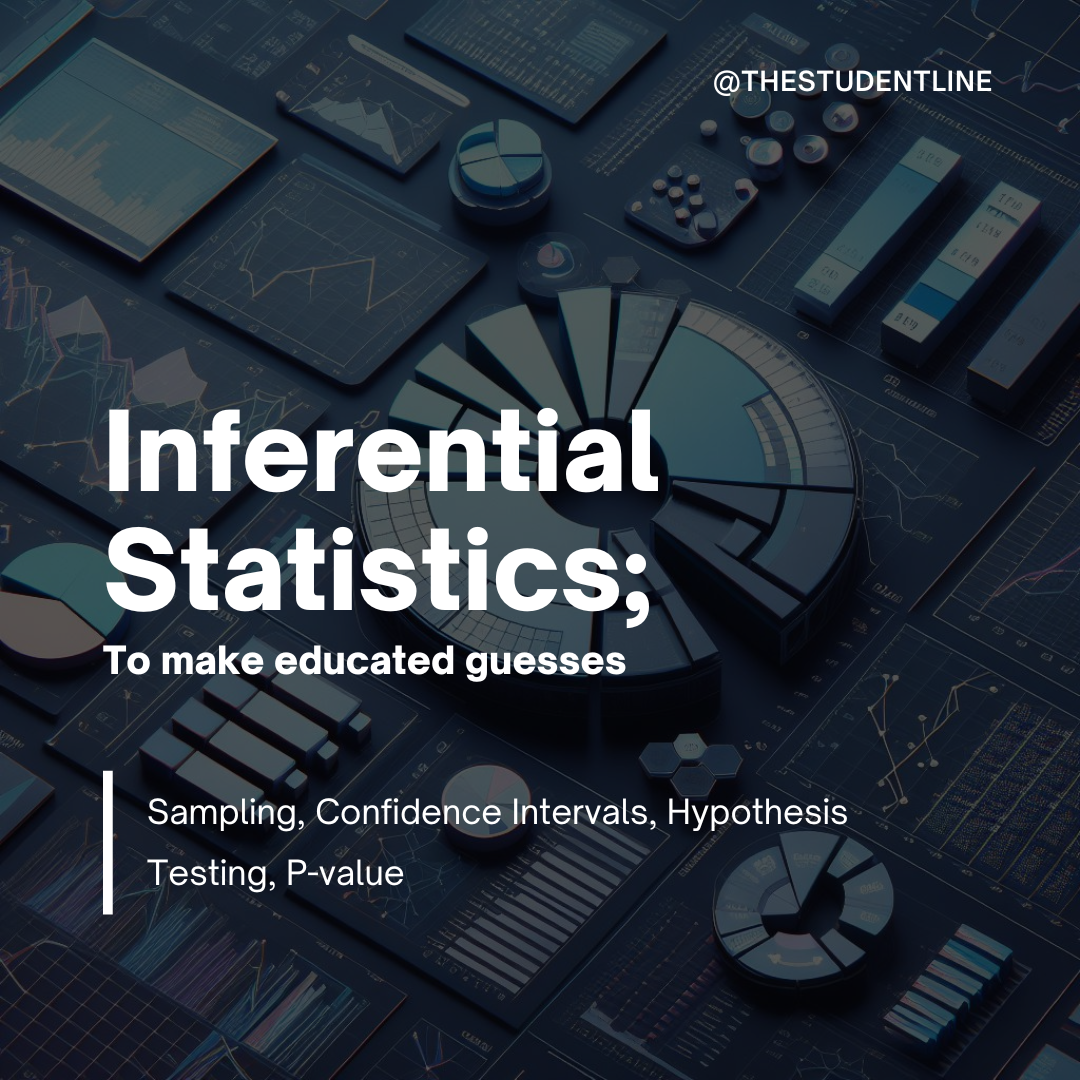Inferential Statistics | Road to Data Science 003

Welcome to our blog! Today, we're embarking on a statistical journey to unravel the mysteries of inferential statistics. Don't let the term intimidate you—we're here to break it down into digestible bits for beginners.
Understanding the Basics
At its core, inferential statistics is the art of drawing meaningful conclusions about a larger group, or population, based on a smaller piece of information, or sample. Think of it as the tool that allows us to make educated guesses about a whole population without having to measure or analyze every single member.
Visualizing Concepts
Consider this scenario: you want to determine the average height of all students in your school. Measuring each student is impractical, so you take a smaller group—a sample—and use inferential statistics to estimate the average height for the entire school.
Key Concepts Simplified
Let's understand some key concepts:
- Population: The entire group we want to study, like all students in the school.
- Sample: A smaller, manageable group we measure to represent the population.
- Parameter: A value describing the entire population, e.g., the true average height of all students.
- Statistic: A value describing the sample, such as the average height of the students in your selected group.
Sampling Strategies
The magic begins with sampling. Choosing the right sample ensures that it accurately reflects the diversity and characteristics of the entire population. Various methods, like random or stratified sampling, help achieve this.
Hypothesis Testing: To make educated Guesses
Once you have your sample, the next step is hypothesis testing:
- Null Hypothesis (H0): Assumes no significant difference or effect.
- Alternative Hypothesis (Ha): Your educated guess that something interesting is happening.
Significance Level (α): The threshold you set to determine if your results are statistically significant.
The Mighty P-Value
Ah, the p-value—a statistical superhero. It represents the probability that observed results occurred by chance alone. If your p-value is less than your significance level, you reject the null hypothesis and embrace the alternative.
Confidence Intervals: Embracing Uncertainty
Confidence intervals provide a range of values where the true parameter is likely to fall. For instance, you might say, "We are 95% confident that the true average height of all students falls between 160 cm and 170 cm."
Conclusion: Key Takeaways
To wrap it up, here are the key takeaways:
- Inferential statistics enables educated guesses about populations from samples.
- Sampling methods are crucial for obtaining representative data.
- Hypothesis testing helps draw conclusions about hypotheses.
- The p-value determines the strength of evidence against the null hypothesis.
- Confidence intervals offer a range of likely values for the population parameter.
All in all, Inferential statistics is like solving a puzzle with numbers—a fundamental tool in various fields. We hope this guide has demystified the concept and made it more accessible. If you have any questions or want to explore more statistical concepts, please leave a comment below. Thanks for reading, and until next time, stay curious!




Comments
Post a Comment